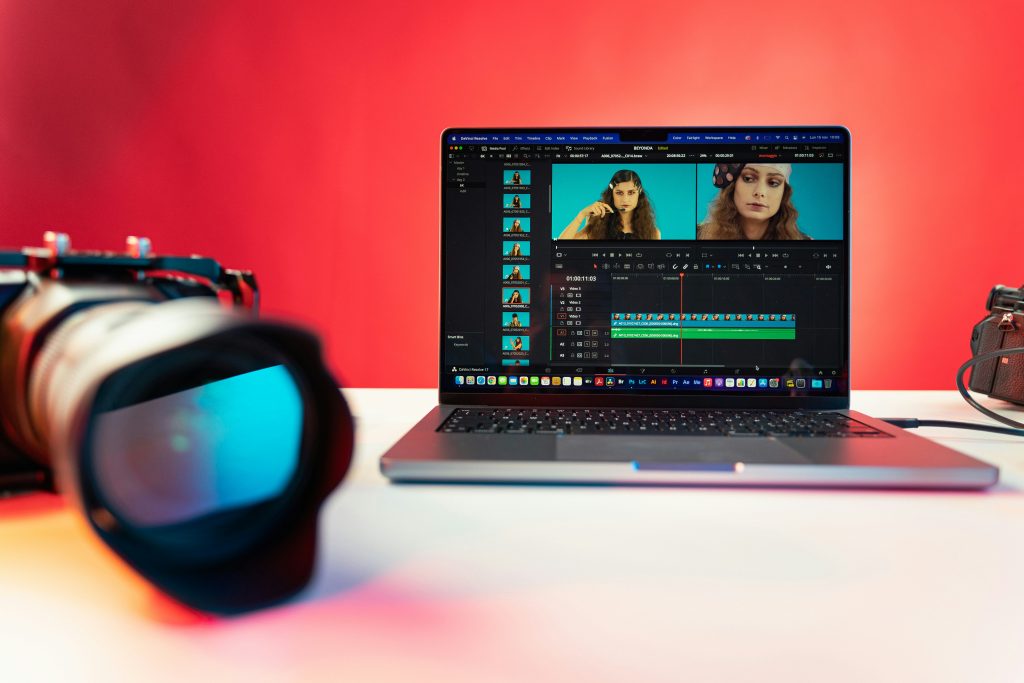Differences Between Short and Long-Form Video
Video has become the most powerful form of communication for businesses, creators, and brands. Yet one question continues to shape how audiences engage with content: How long should a video be?
The debate between short-form content and long-form video isn’t just about time; it’s about impact, engagement, and storytelling potential. Each format offers unique benefits depending on the message, platform, and audience behavior.
In this article, we’ll explore how video length influences viewer engagement, the types of content best suited for short and long formats, and how BLARE Media strategically approaches video length to deliver compelling results.
The Differences Between Short and Long Form Video
Video length directly influences how viewers perceive and engage with content. Attention spans have shortened significantly in the age of scrolling feeds and instant gratification, but longer videos still hold value for immersive storytelling and complex messaging. Utalizing video length is a techinque used over various content professionals.
- Short-form videos (typically 15 seconds to three minutes) thrive in environments where speed and immediacy matter. They deliver quick hits of information or entertainment, perfect for platforms like TikTok, Instagram Reels, and YouTube Shorts.
- Long-form videos (five minutes to an hour or more) allow for deeper exploration of topics, emotional storytelling, and brand building. These videos are more common on YouTube, streaming platforms, and educational or documentary formats.
Key Viewer Behaviors Influenced by Video Length
Knowing your audience and how you wish to communicate with you video is essential for the production planning phase of your film. Understanding how video length can add or take away from the view experience is important.
Attention Span & Retention
Studies show that viewer retention drops significantly after the first 60 seconds of a video unless the content is compelling. Short videos often see higher completion rates simply because they demand less time investment.
Emotional Connection
Long-form videos allow more room to develop characters, build emotional arcs, and create immersive experiences. This is why brand documentaries and mini-films are gaining popularity.
Action & Conversion
Short videos are ideal for driving immediate action—clicks, sign-ups, purchases—because they get to the point quickly. Long-form videos nurture deeper interest and trust, which can lead to higher-value conversions over time.
What Kinds of Media Are Better for Long-Form Video?
Long-form video thrives when a message requires depth, context, or narrative. Here are the formats where longer content excels:
Movies and Documentaries
Movies and documentaries represent the most traditional use of long-form video, often running 30 minutes to several hours. These projects need extended time to:
- Build a strong narrative arc.
- Develop characters and storylines.
- Evoke emotions that create lasting impact.
For brand filmmaking, a mini-documentary or narrative-driven video can be a powerful way to share your company’s origin story or highlight customer experiences in a cinematic format.
YouTube & Streaming Content
YouTube’s algorithm heavily rewards watch time, making long-form videos highly valuable for creators and businesses. Videos ranging from 8 to 12 minutes often perform best for:
- Tutorials and instructional content.
- Product reviews and breakdowns.
- Vlogs and behind-the-scenes looks at creative processes.
Streaming platforms such as Netflix or Hulu are also shifting toward branded long-form content—think branded series, behind-the-scenes specials, or exclusive interviews.
Educational & Corporate Training
Corporate training videos, webinars, and instructional series need time to explain complex topics. These formats rely on long-form content to:
- Deliver step-by-step guidance.
- Include visuals, demonstrations, and interactive elements.
- Reinforce learning through repetition and context.
Pro Tip: Even long-form videos must open strong. If you lose your viewer in the first 10 seconds, they may never experience the value of the rest of your content.
What Kinds of Media Are Better for Short-Form Video?
Short-form video has exploded in popularity thanks to social media and mobile-first consumption. These quick clips dominate marketing campaigns and trend-driven content strategies.
Marketing & Advertising
Short-form videos are perfect for campaigns designed to grab attention quickly and drive fast results. Examples include:
- Explainer Videos – Under 90 seconds to clearly convey what a product or service does and why it matters.
- Commercials – TV spots and YouTube pre-roll ads generally perform best at 15–30 seconds, delivering a concise message before viewer attention wanes.
- Social Media Ads – Mobile-first users scroll quickly, so keeping ads under 30 seconds maximizes engagement.
Best Practice: One key takeaway per video. Trying to cram too much information into a short clip can confuse or overwhelm your audience.
Social Media Content
TikTok, Instagram Reels, and YouTube Shorts have redefined how users consume video. Success on these platforms depends on:
- Quick visual hooks (first 2–3 seconds).
- Engaging music, trending sounds, or captions.
- Bite-sized narratives, mini-stories that can be consumed instantly.
Trend-Driven Engagement
Short videos are ideal for tapping into trends and challenges that drive virality. Brands use this format to:
- Participate in popular challenges.
- Share fast behind-the-scenes moments.
- React to industry news or cultural moments.
How BLARE Media Approaches Video Length
At BLARE Media, determining video length isn’t an afterthought, it’s a key part of our creative strategy. Every project begins with a clear understanding of:
- The Goal: Is the purpose to entertain, inform, convert, or inspire?
- The Audience: Who are we speaking to, and what is their attention span?
- The Platform: Where will this video live, and how do viewers consume content there?
By aligning these factors, we create videos that maximize impact. Whether it’s a high-energy social media ad or a long-form brand film that builds emotional connection.
Conclusion
The difference between short and long-form video is more than just timing, it’s strategy. Short videos excel at capturing attention, driving conversions, and fueling social media growth. Long-form videos build deeper connections, tell richer stories, and educate audiences in meaningful ways.
At BLARE Media, we help brands navigate both worlds, producing videos that engage, inspire, and deliver results no matter the length.


